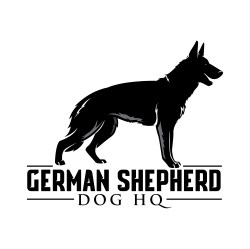The German Shepherd breed is known for a number of desirable characteristics. Because of this, they…
The Blonde German Shepherd (Explained)
Although black & tan is undeniably the most iconic GSD coat, the breed actually comes in a wide variety of coat colors. Some of these colors like black, black & red, and sable, are more common than others.
Blue and liver are considered among the rare GSD colors, but even less common are blonde German Shepherds.
What is a Blonde German Shepherd?
Blonde German Shepherds don a light-colored cream or golden coat that’s incredibly unusual to the breed. Instead, the color of their coats is closer to that of a Golden Retriever or a Yellow Labrador. Other than coat color, these GSDs are the same as any other GSD.
What Genetic Factors Contribute to the Blonde GSD Coat?
Two forms of natural pigment called melanin determine the color of a dog’s coat. These are phaeomelanin and eumelanin. By default, eumelanin produces the color black while phaeomelanin produces the color red.
Genes modify these pigments to produce a wide variety of coat colors. For example, gene dilution in the eumelanin pigment can produce liver or blue german shepherds.
On the other hand, phaeomelanin can produce red in different shades. Genes can also influence it to produce orange, gold, and yellow coats.
What Coat Combinations Usually Breed the Blonde Coloring?
Blonde German Shepherds are somewhat of an enigma, and it’s tough to determine exactly how to produce this rare coat in a breeding program. It’s a fact that blonde is produced by the red phaeomelanin pigment.
However, solid red is not a recognized GSD coat color and the diluted phaeomelanin in the black & red would produce the black & cream combination, not the solid blonde coat.
Some speculate that blonde GSDs might come from white parents. However, white coloring in canines is caused by the absence of pigment.
So, genetically, white coats cannot become blonde. It’s more probable to produce a very light liver, which might be mistaken for blonde.
A study published by the Journal of Heredity in 2007 could be a clue to this incredibly unusual color.
According to the research, the genotype ee at the MC1R gene produces the cream color in German Shepherds. It’s possible that this is what causes the solid golden-yellow color as well.
How Rare is the Blonde German Shepherd?
Blonde German Shepherds are remarkably rare because it takes a very unusual genetic combination to produce such offspring.
Additionally, it is not among the coat colors that are considered desirable in show dogs. So, professional breeders are not motivated to produce them.
Breeders also fear that blonde GSDs might bring up doubts about their pedigrees not being purebred.
Are Blonde German Shepherds Purebred?
When a blonde GSD puppy is the product of two purebred parents, the puppy is undeniably purebred. The color of its coat might be unusual, but it is only caused by a unique genetic combination and not because it is a crossbreed.
Nevertheless, blonde-coated German Shepherds can also be mixed-breed dogs.
Sometimes, GSD-looking dogs are blonde because they are the offspring of a GSD and another dog, like a Yellow Labrador or a Golden Retriever.
They retain the general appearance of the German Shepherd parent but the coloring of the other breed. This is the reason why there can be speculation about whether Blonde GSDs are purebred in some instances.
Typical Attributes of the Blonde GSD
Blonde GSDs might be unusual, but their coat color is actually the only thing that’s different about them. The genetic differences that lead to their unique pigmentation don’t affect anything other than their coat color.
Apart from their color, these dogs are exactly what you would expect from a typical German Shepherd.
As long as they are purebred, blonde German Shepherds will have the same build and general appearance as their GSD parents. They will also have the same grooming requirements.
Additionally, you can expect their personality, temperament, and intelligence level to be comparable to any other dog of the same breed. Owning one means you need to be ready to offer strong leadership and take the time to socialize, train, and mentally stimulate your dog.
Does the AKC Recognize the Blonde Coat Coloring?
The American Kennel Club does not recognize blonde as a natural color of a purebred German Shepherd. The closest color it recognizes is white, but even that is considered a serious fault. So, blonde German Shepherds would not be allowed to enter conformation events.
Nevertheless, blonde GSDs can still participate in many other AKC events. Because they are such athletic dogs, they are expected to perform well in canine sports such as Agility, Flyball, and Dock Diving.
How Much is a Blonde German Shepherd?
Because they are so rare, there is no documented average pricing for blonde-coated German Shepherd puppies. Typical GSDs range in price from $450 and $1,900.
Although it’s safe to assume that blondes will cost much cheaper because of the lack of AKC recognition, they actually tend to be more expensive because they are so rare.
Are Blonde and Albino German Shepherds the Same?
No, blonde and albino German Shepherds are vastly different from one another. Blondeness is a dilution in the red coloring. On the other hand, albinism is caused by the absence of the pigment eumelanin.
An albino dog will not just have a completely white coat but also a pink nose and eye rims. Eye color is also affected, where it turns out to be light blue or, rarely, red.
Final Thoughts
Owning a blonde German Shepherd will definitely be a unique experience because they are incredibly rare. If you find one that you’re hoping to welcome into your home, make sure you know what it takes to raise a well-mannered GSD.
If you are not quite sure that the blonde GSD is your best option, you might also want to check out liver-colored, black, panda, or blue German Shepherds.




